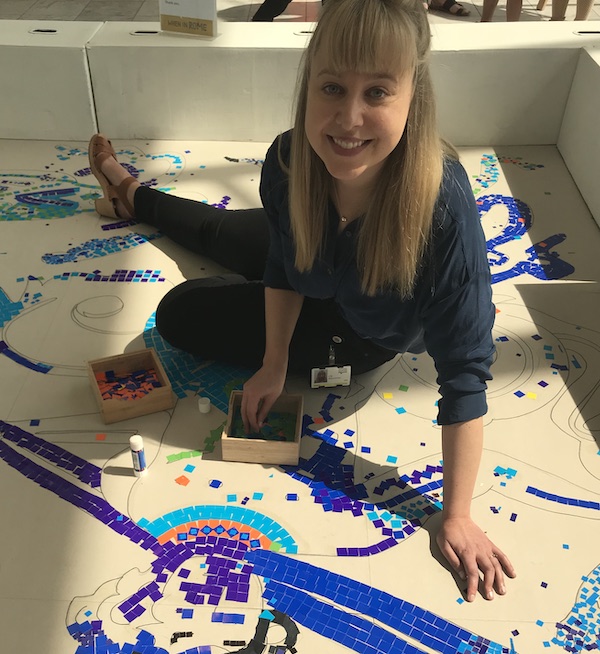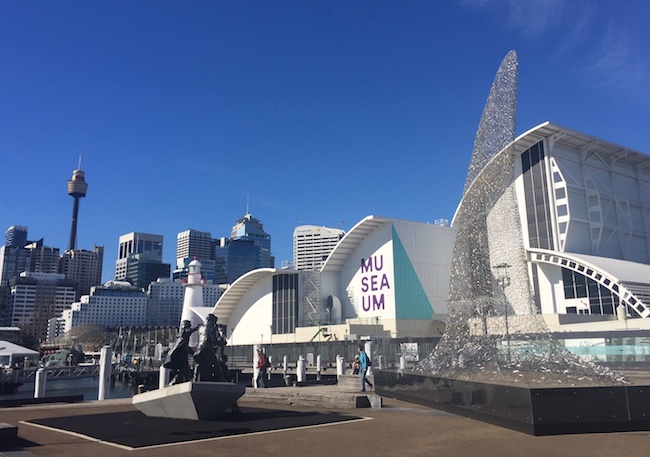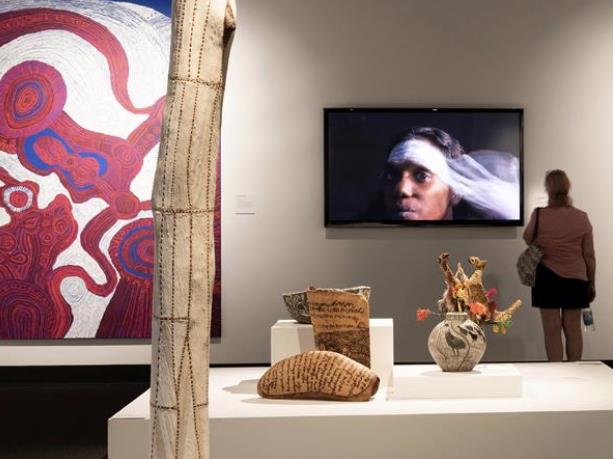The definition of what it means to be a ‘museum’ has been constantly changing. The word originates in the Temples of the Muses – ancient Greek goddesses of the arts among whom were the Muses of Comedy and Astronomy alongside more traditional museum subjects, such as History.
On the surface museums seem to show us who we are but their real mission is to transform. Visiting a great museum you should emerge as a different person, having looked at your society and your place in it, and reconsidered how you will live in it – ideally for the better.
As Marcus Schutenko, Director, Museum and Art Gallery of the Northern Territory, reminds us: ‘Museums are amongst the world’s most trusted institutions. The growth and diversification of the media has led to greater capacity for the scrutiny of institutions. Significant portions of the public and media are demanding increasingly higher levels of ethical standards.’
To celebrate Museum Week, we asked seven arts professionals how they thought museums can continue to be an important representation of who we are and, more significantly, how they can stay relevant in our over-stimulated age.
Lily Withycombe, Curator, Discovery and Collections, National Museum of Australia

‘Museums must be for people: co-designed and community driven. We should create accessible programming that engages with real issues and stimulates all audiences, provide free spaces for visitors to connect through shared histories and tangible storytelling, design immersive and unique digital experiences. At the same time we should also offer an escape from our screens through object-focused, hands-on displays.’
Visit the National Museum of Australia
Carmel O’Keeffe, Manager Digital Life, Museums Victoria
‘Digital technology enables us to connect with audiences beyond our walls and it’s important for us to be active where our audiences are active. Digital story production and distribution is a new focus for us and our growth in digital reach relies on our content being relevant.
‘Museums Victoria has deep expertise across many areas and harnessing that for digital audiences means we are adding our trusted voice to contemporary conversations. An example of this is a story we recently made about Melbourne’s fatberg – it shows how we are using digital storytelling to change how audiences access and experience Museums Victoria.’
‘It’s not the prettiest thing…’ The What is a fatberg? video may not be easy viewing but it shows us where our waste goes and perhaps changes our attitudes.
Marcus Schutenko, Director, Museum and Art Gallery of the Northern Territory
‘The Museum and Art Gallery of the Northern Territory (MAGNT) places ethics to fore of everything we do. Our increasing investment and focus on advancing Aboriginal culture is driven by our ethics agenda. The work we are doing places MAGNT as a leading institution in delivering best practice in collaborating with Aboriginal communities, to which other museums are looking to us to improve their own operations.
‘Engaging ethically with Aboriginal communities is making museums rethink everything from consultation, accessibility, storage and documentation. MAGNT aspires to be a leader in finding a true path to reconciliation between Aboriginal and non-Aboriginal Australians. With 26% of the Northern Territory’s population being Aboriginal or Torres Strait Islander, and 75% of MAGNT’s visitors coming from outside the Northern Territory, we are well placed to have a role in facilitating this reconciliation.’
Tracy Puklowski, Creative Arts & Cultural Services Director, City of Launceston, Queen Victoria Museum & Art Gallery
‘When it comes to relevance in museums, we can never afford to assume that we know what people want – particularly in such a rapidly changing world. An assumption that the stuff museums have been doing for centuries still has meaning for our communities is a dangerous one; the biggest threat to museums today isn’t funding, it’s the loss of relevance.
‘Staying relevant requires us to get over ourselves, stop making assumptions, and listen to the people and communities who want to see themselves and tell their own stories in our museums.’
Visit Queen Victoria Museum & Art Gallery (QVMAG)
Kevin Sumption, Director & CEO, Australian National Maritime Museum
‘I believe relevance should first and foremost be a question for the visitor. For instance the Australian National Maritime Museum was built more than 25 years ago. Then, our audiences were predominantly Sydneysiders who valued us primarily as a place for East Coast focused storytelling. But now the Museum finds itself in the middle of a high-rise, one-stop, entertainment precinct where nearly half our visitors are interstate and overseas tourists, eager to consume a broader, national and transnational story set.
‘Today over 800,000 visitors a year come through our doors, mostly in response to a range of new, “visitor experiences” which have sensitively expanded to embrace both saltwater and fresh water Indigenous cultures, as well as ocean science and contemporary defence themes.

‘In response to these changes, we recently unveiled a bold, new, attention-grabbing logo and striking colour scheme, all inspired by the sea. So not surprisingly our new identity has taken the word SEA to its very heart, in an attempt to create a powerful emotional connection with visitors.
‘It is my belief that working to continually strengthen this “emotional” connection between the Museum and visitor, is another critical way of staying relevant.’
Mark Goggin, Executive Director, Sydney Living Museums
‘At Sydney Living Museums (SLM), we believe that history matters in our contemporary life. SLM’s places are not frozen in a colonial past … [they] resonate with stories about real people living through times of turmoil, joy, growth and loss. The experiences of the Aboriginal people, the convicts and the immigrants who lived through this remarkable history are directly relevant to today and deeply intermingled into our national and personal identities.
‘We increasingly focus on these everyday lived experiences, and how they changed over time, to enable our visitors to better understand the society we live in today … we present this living history to help inform our shared future.’
Renai Grace, Director, Museum of Brisbane
‘Museum of Brisbane is dedicated to supporting the city’s many talented artists, designers, writers, historians and storytellers. We invite artists to create works inspired by our city and engage our visitors in a global conversation. Any day in the Museum you may find Traditional Owners sharing local lore, an artist-in-residence creating new work, a performance in one of our exhibitions and our educators nurturing curiosity and creativity.
‘Most recently, we launched BRISBANE ART DESIGN (BAD) 2019, a takeover of Museum of Brisbane, framed by a city-wide 17-day festival including exhibitions, performances, talks, workshops, tours and open studios. BAD champions the Brisbane art and design sector, highlighting our cultural identity and bringing the city’s collective creativity to the fore.’
Museum Week runs from 13-19 May showcasing the best institutions have to offer using the hashtag #WomenInCulture.
This story was prepared by George Dunford, Gina Fairley and Richard Watts.





